Megalodon Teeth and Shark Fossils: A Collector’s Guide
Introduction

Why are megalodon teeth so fascinating? The megalodon (Otodus megalodon) is the largest shark that ever lived, ruling the oceans between 23 and 3.6 million years ago. This giant predator, which could reach 18 meters in length, left behind one of the most sought-after fossils: its immense teeth.
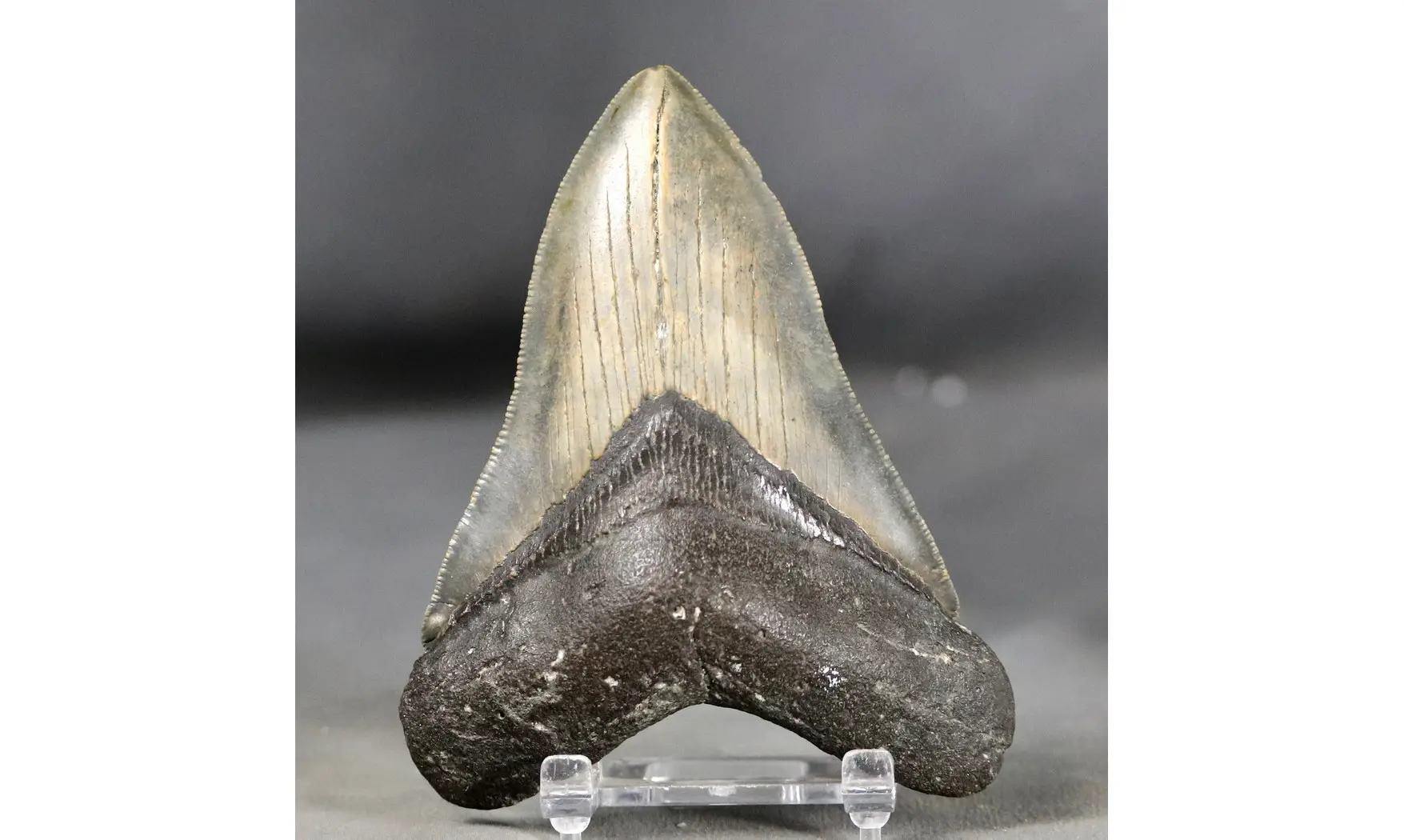
These teeth are among the most commonly found shark fossils due to the constant turnover of their dentition. They are of great interest to scientists and collectors alike, offering a fascinating insight into prehistoric marine ecosystems. Their size, rarity, and historical importance make them valuable collectibles.
Description of Megalodon Teeth
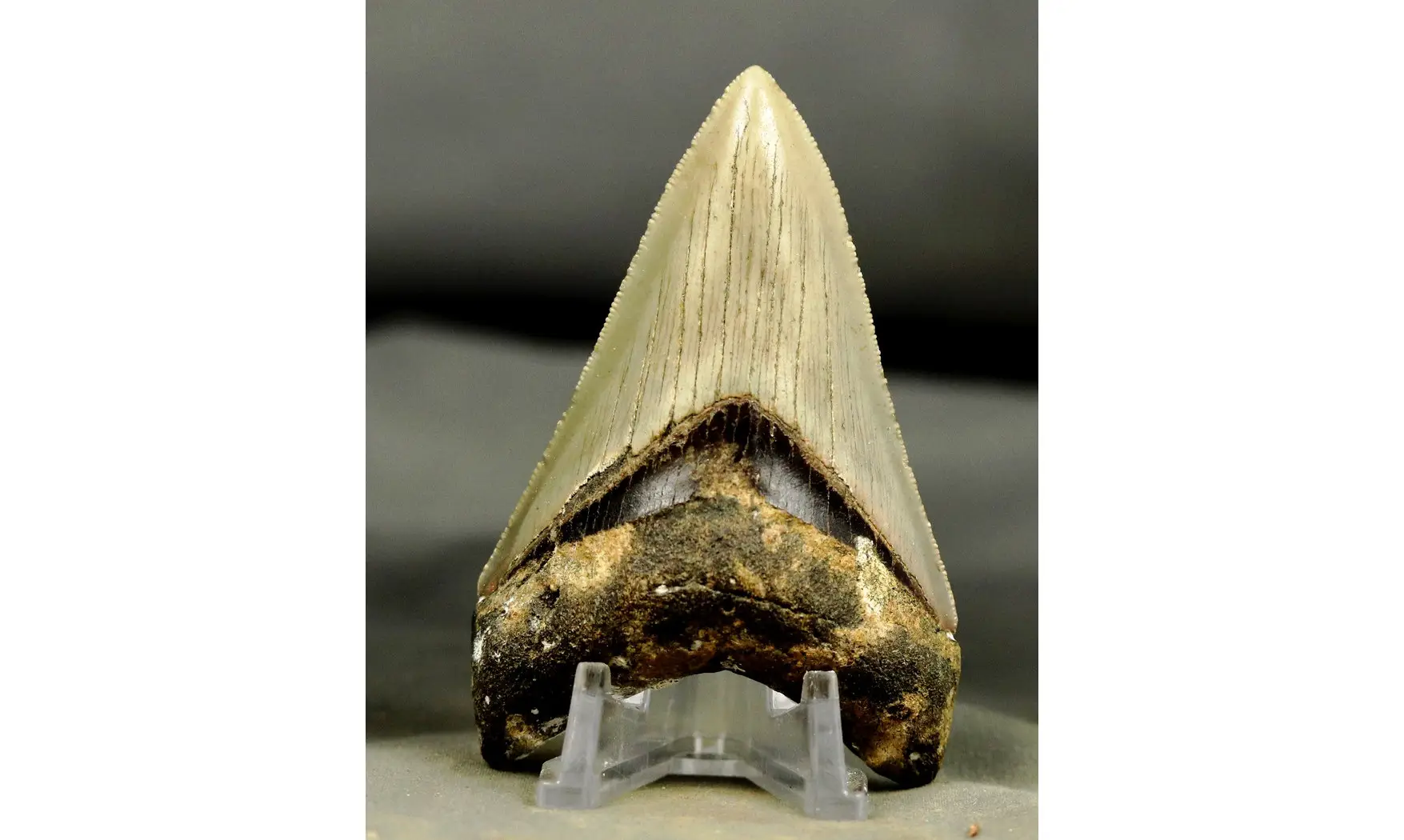
Megalodon teeth are much larger than those of modern sharks. While the teeth of the great white shark rarely exceed 7 cm, those of the megalodon can reach 18 cm. Their thick triangular shape and serrated edges made them particularly effective at slicing flesh and crushing the bones of their prey.

Like modern sharks, the megalodon constantly renewed its teeth throughout its life, probably losing thousands of teeth. This characteristic explains their abundance in fossils. When they fossilize, they absorb minerals from the soil, which gives them various shades, ranging from black to gray, blue and brown.
Where and how are megalodon teeth found?
Megalodon teeth are mainly found in coastal areas where marine sediments have favored their fossilization over the millennia. The most famous places to find them are South Carolina, Florida, and Morocco, but they can also be found in other parts of the world, such as Central America, the islands of the Caribbean Sea, and some places in Australia and South Africa. These fossils come from sharks that lived in the oceans about 2.6 million years ago. When these predators died, their teeth naturally detached and were carried by ocean currents to areas suitable for fossilization. Fossils can be discovered during scuba diving, dredging in rivers, or land excavations, especially in places where ancient geological layers have been uncovered.
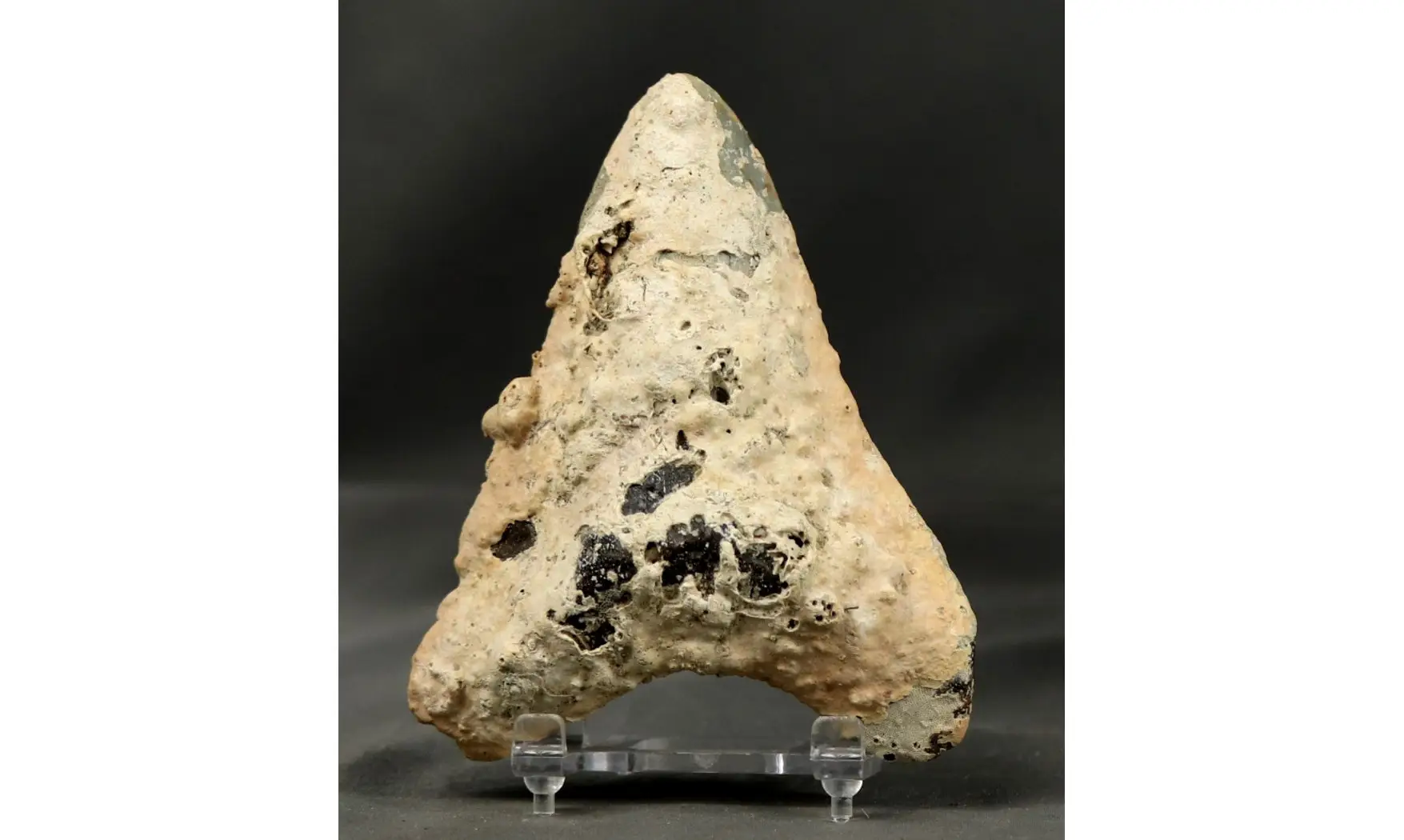
The fossilization process plays a key role in the preservation of teeth. Depending on the minerals present in the soil and the oxygenation of the sediments, teeth can acquire various shades ranging from black to blue, brown or gray. These colors are due to the interaction of the tooth with minerals in the soil over millions of years. Deep-sea dredging sites, where ocean currents bring ancient materials, are often places of discovery. Searching for megalodon teeth is a job that requires patience and perseverance, but there are specialized techniques such as using underwater sieves or mechanical shovels to extract fossils from sediment.

Value and trade of megalodon teeth
The value of megalodon teeth depends on several factors, including their size, state of preservation, rarity and color. The larger, more intact and well-preserved a tooth is, the more valuable it is. Some exceptional teeth fetch several thousand euros on the market.
The largest teeth, exceeding 6 inches (about 15 cm), can sell for more than €20,000. Color can also influence value, with rare shades such as blue or orange being particularly sought after. However, due to their high price, counterfeits are circulating in the market. It is therefore advisable to buy from reputable sellers and check the authenticity of the teeth.

How to recognize the authenticity of a megalodon tooth?
The growing demand for megalodon teeth has led to the emergence of many counterfeits. Distinguishing a real fossilized tooth from a replica requires a keen eye. For starters, a real tooth is generally much heavier and denser than a resin replica, which is often too light. A real megalodon tooth will have a rough texture, especially on the root, and a mineralized appearance, while a replica will tend to be smooth and uniform. The root of a fossilized tooth may also have irregularities and small natural holes, characteristic of fossilization, while a fake root is often perfectly smooth and uniform.
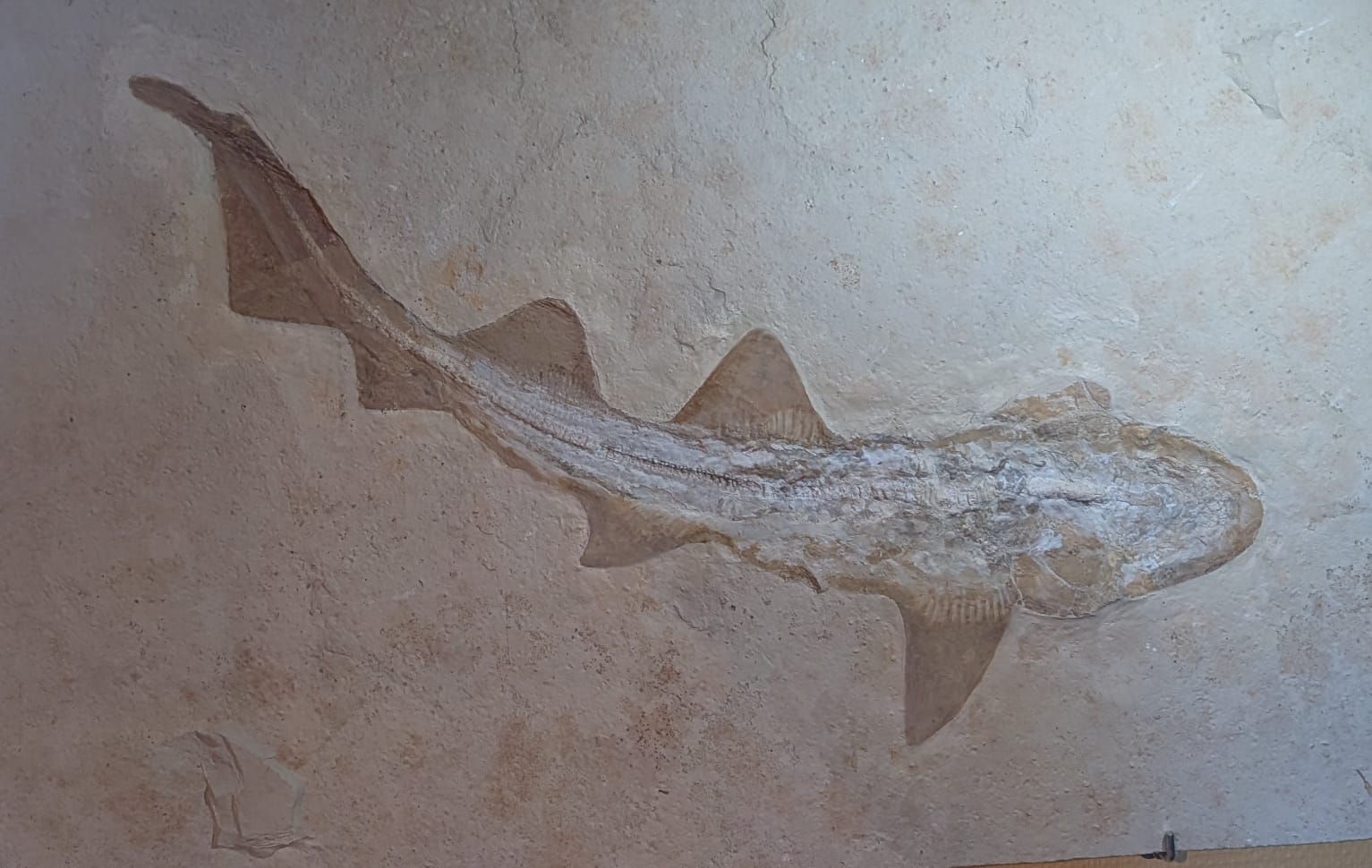
The colors of authentic teeth are also a good indicator. Fossilized megalodon teeth vary depending on the minerals present in the soil where they were buried, which gives them hues ranging from deep black to blue, through shades of gray or red. Replicas, on the other hand, will have more uniform and less natural colors. Another thing to look for is the surface of the tooth: a real tooth will have visible growth lines on the enamel, called growth striations, which cast replicas typically don’t reproduce as accurately. These lines appear as thin, parallel striations on the enamel, a feature that indicates the tooth has grown over time.
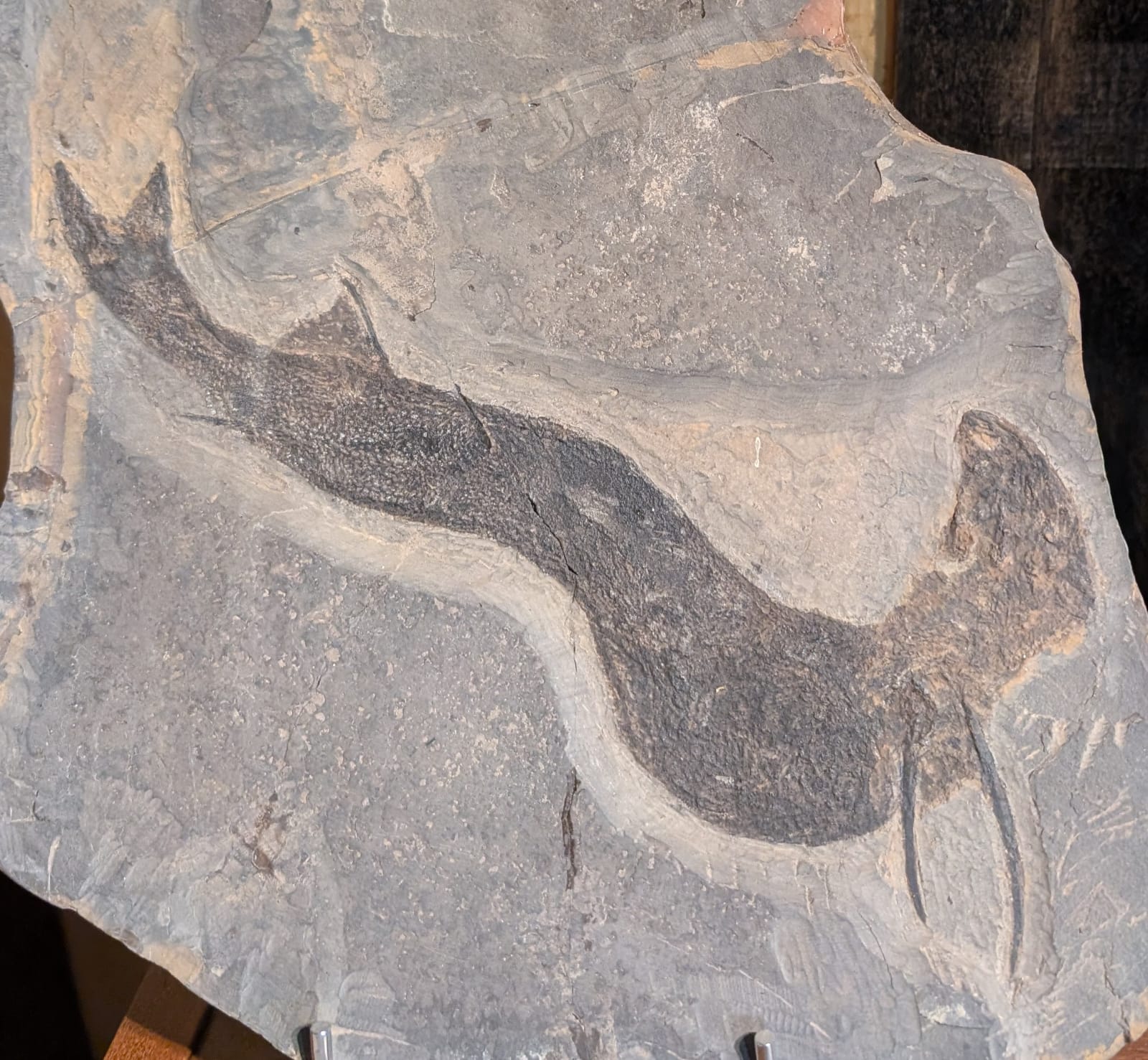
Finally, the best way to ensure the authenticity of a tooth is to purchase it from reputable sources, such as specialty dealers or museums. Reputable dealers often provide a certificate of authenticity and can provide detailed information about the fossil’s provenance. It’s also a good idea to check the tooth’s provenance before purchasing, as some megalodon teeth come from highly regulated excavation areas, which ensures their legality and authenticity. For a more accurate assessment, some collectors choose to have their fossil tested by experts who can certify its age and origin.
If you want to be sure of the authenticity of your megalodon tooth, we offer 100% authentic specimens on our website.
Why Collect Megalodon Teeth?
Megalodon teeth are not only collectibles, they also have great scientific value. They allow us to study the evolution of sharks, their diet, and the causes of their extinction.
They are also highly prized for their aesthetics. Their imposing shape and unique colors make them impressive decorative objects, often framed or mounted as jewelry. Finally, they represent a potential investment, their rarity and popularity only increasing over time.
Unusual Facts and Trivia About Megalodon Teeth
Some megalodon teeth are among the largest shark fossils ever discovered. A 6.9-inch (17.5 cm) tooth found in Peru is one of the largest intact specimens recorded.
People once thought that these fossils were “tongue stones” belonging to dragons or mythical creatures. Even today, some theories suggest that the megalodon may still exist in the deep ocean, although scientists have found no evidence of its survival.
The colors of the fossilized teeth are often a source of surprise. Black and gray are the result of manganese and iron in the soil, while red or orange hues are caused by iron oxide.
How Megalodon Teeth Differ from Modern Shark Teeth

Megalodon teeth are significantly larger than those of modern sharks, which rarely exceed 5 cm. Their triangular, serrated shape was adapted to hunting large prey, unlike the teeth of modern sharks, which vary depending on their diet.

Great white sharks have teeth similar to those of megalodon, but much smaller. Mako sharks have long, thin teeth, ideal for catching fast-moving fish. Bull sharks, on the other hand, have sharp, curved teeth that are perfect for capturing a variety of prey.

Finally, since megalodon teeth are fossilized, they have dark hues while those of modern sharks remain white or yellowish. Their rarity and age make them much more valuable on the collectors' market.
Shark Fossils: A Bigger Universe

Sharks lose and replace thousands of teeth during their lifetime, which is why they are the most common fossils. Unlike their cartilaginous skeleton, which decomposes quickly, their teeth are more resistant to fossilization.
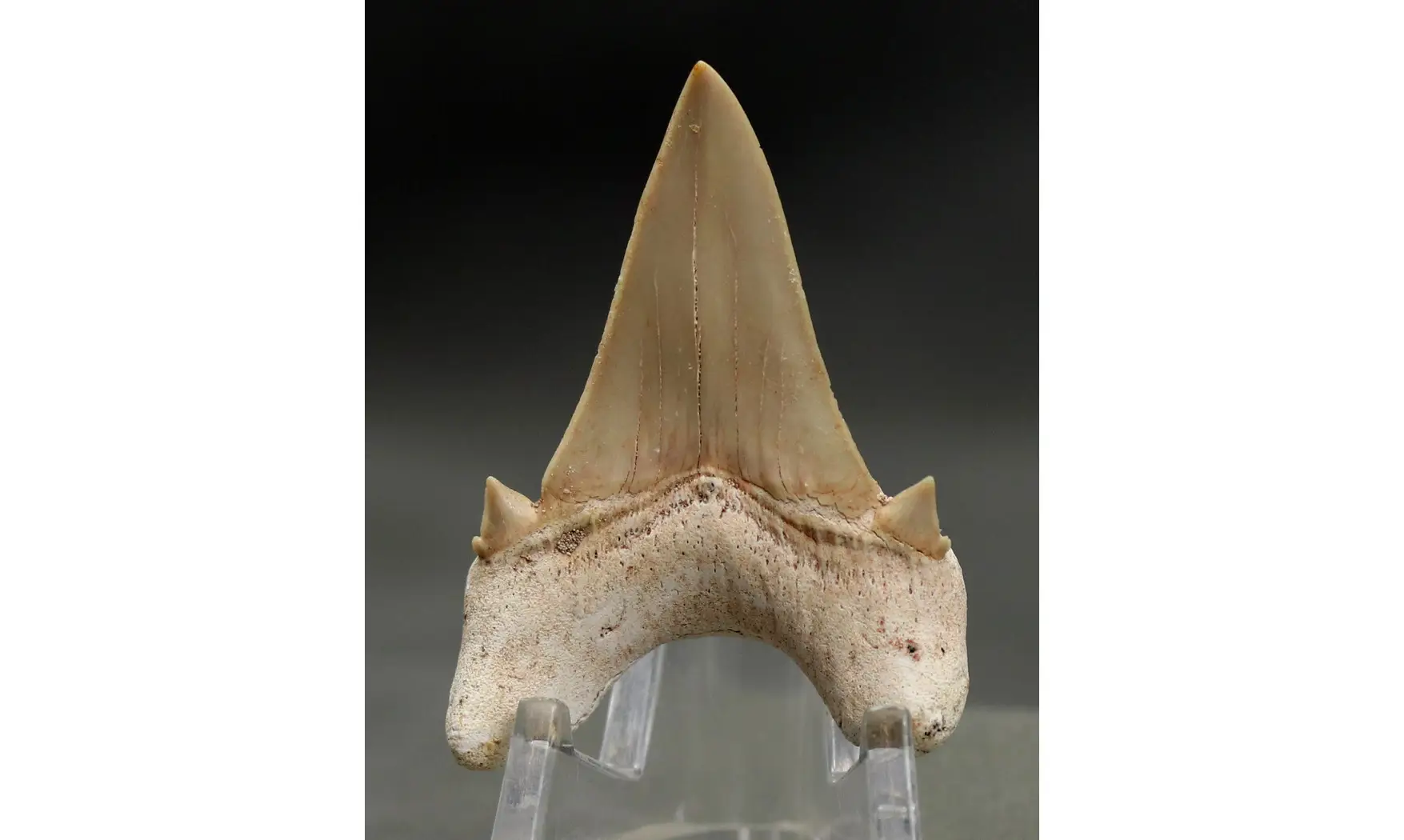
In addition to teeth, other shark fossils are sought after, such as vertebrae, backbones, and fossilized scales. Some extinct species, such as Carcharocles chubutensis, also have teeth that are highly prized by collectors.

Shark fossil collecting is not limited to the megalodon. Many enthusiasts are interested in older specimens, dating back to the Devonian period, more than 400 million years ago. To obtain these fossils, it is possible to buy from specialized dealers or participate in supervised excavations.
Conclusion
Why be interested in shark fossils? Shark fossils, and megalodon teeth in particular, are of immense scientific importance. They provide insight into the evolution of marine predators and the climate changes that influenced their extinction. In addition to their scientific interest, these fossils appeal to collectors for their beauty and rarity. Whether for research, decoration or investment, megalodon teeth and other shark fossils offer a unique connection to the history of the oceans and the mysteries of the past.















